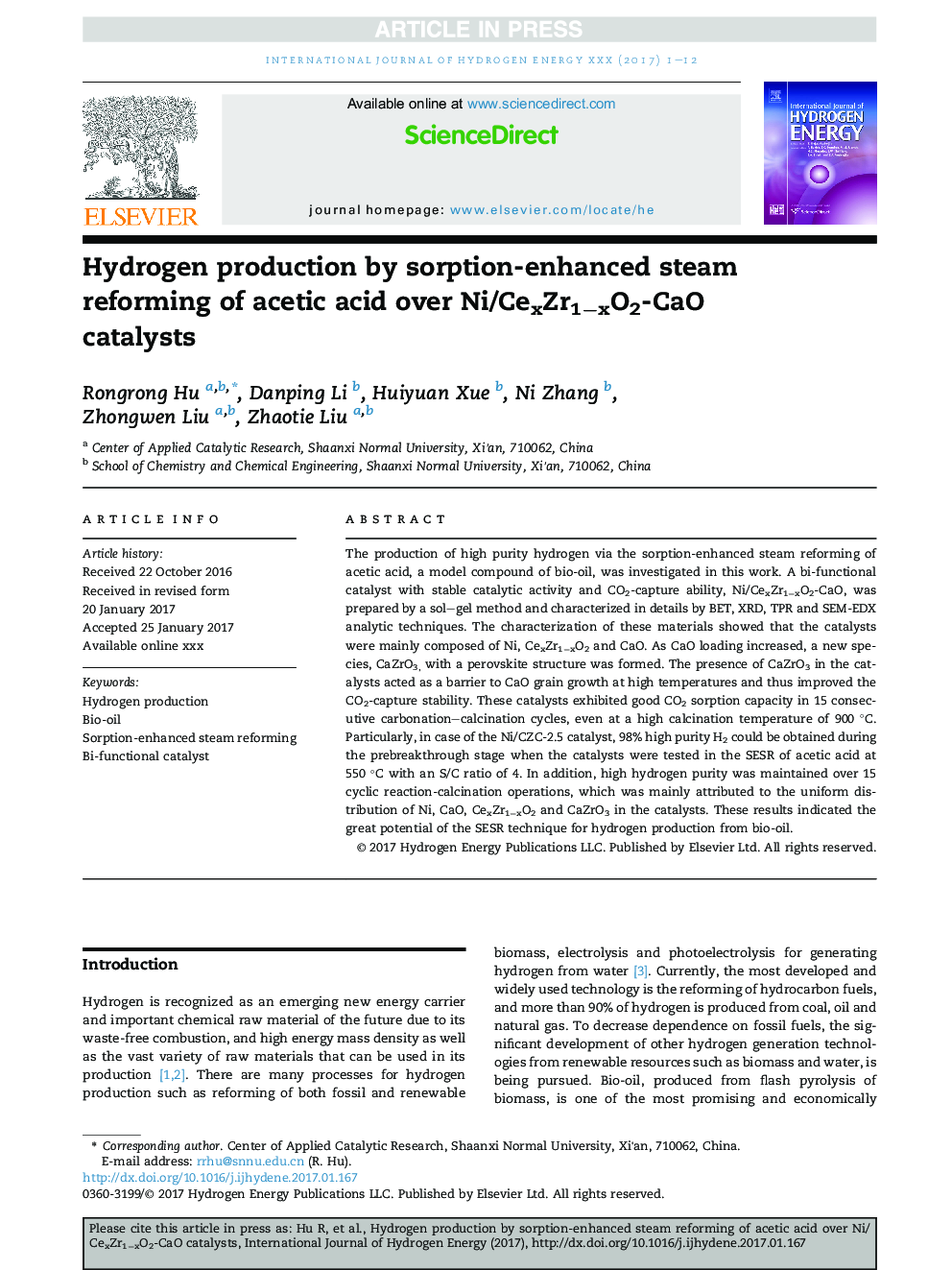| Article ID | Journal | Published Year | Pages | File Type |
|---|---|---|---|---|
| 5148268 | International Journal of Hydrogen Energy | 2017 | 12 Pages |
Abstract
The production of high purity hydrogen via the sorption-enhanced steam reforming of acetic acid, a model compound of bio-oil, was investigated in this work. A bi-functional catalyst with stable catalytic activity and CO2-capture ability, Ni/CexZr1âxO2-CaO, was prepared by a sol-gel method and characterized in details by BET, XRD, TPR and SEM-EDX analytic techniques. The characterization of these materials showed that the catalysts were mainly composed of Ni, CexZr1âxO2 and CaO. As CaO loading increased, a new species, CaZrO3, with a perovskite structure was formed. The presence of CaZrO3 in the catalysts acted as a barrier to CaO grain growth at high temperatures and thus improved the CO2-capture stability. These catalysts exhibited good CO2 sorption capacity in 15 consecutive carbonation-calcination cycles, even at a high calcination temperature of 900 °C. Particularly, in case of the Ni/CZC-2.5 catalyst, 98% high purity H2 could be obtained during the prebreakthrough stage when the catalysts were tested in the SESR of acetic acid at 550 °C with an S/C ratio of 4. In addition, high hydrogen purity was maintained over 15 cyclic reaction-calcination operations, which was mainly attributed to the uniform distribution of Ni, CaO, CexZr1âxO2 and CaZrO3 in the catalysts. These results indicated the great potential of the SESR technique for hydrogen production from bio-oil.
Related Topics
Physical Sciences and Engineering
Chemistry
Electrochemistry
Authors
Rongrong Hu, Danping Li, Huiyuan Xue, Ni Zhang, Zhongwen Liu, Zhaotie Liu,
